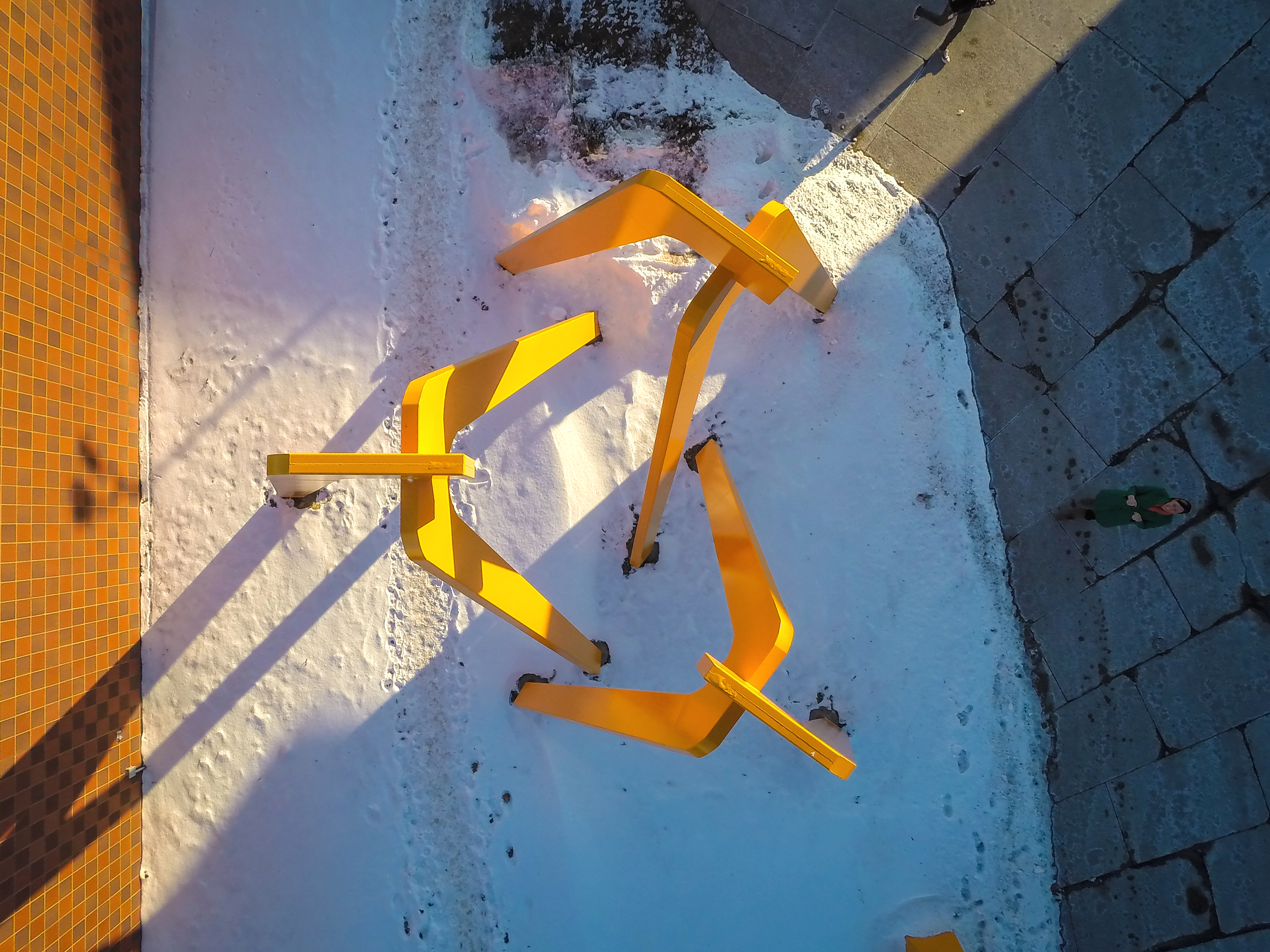“Seeds of a Sculpture” was the title of the guest lecture on Sunday, April 26, by artist Rolf Westphal regarding the inspiration for his sculpture Aerial Landscape. It consisted of a series of anecdotes about points throughout his life that he felt had influenced him and his approach to art.
Westphal spoke of people who had influenced him, including a Korean war photographer, a renegade museum director and a professor of political science. The professor taught him to look at all sides of an issue by asking his students to tell him “what is good” about topics that might be generally understood to be negative.
Points of inspiration in his life included memories of sailing in the North Sea, learning of the destruction of war from a Holocaust survivor, making nests in the woods for eggs from the Easter Bunny, watching his parents unload giraffes off of ships from Africa and being taken under the wing of one child after being made fun of for his German origins by another.
He recalled sleeping on the ice at the Canadian border and the tundra, visiting a university surrounded by bombing protesters, being a part of a group of artists called Groupa Grapa, and finding a connection between hijacked trucks in one part of the country and those in charge of the trucks in another.
He concluded his speech by stating that what he shared is only part of the whole of things that have impacted his art.
Part of the inspiration for Aerial Landscape that Westphal held a certain fascination for was “the rope children.” The sculpture is, in some ways, an homage to them and their representation of the naiveté and potential of the next generation.
The ballards containing the earthscapes were intended to project the idea that “no matter what individual problems exist in the world, the earth will always be there and there will always be something doing something.”
This speech followed the rededication ceremony of Aerial Landscape. During this ceremony, both President Mark Burstein and Associate Professor of Art Rob Neilson spoke a few words about the sculpture in the context of Lawrence and of the role of public art in a larger context.
“A college campus is about provocation and thinking about the world,” said Burstein, recalling to memory previous convocation speeches that he has delivered regarding the importance of positive discourse at a liberal arts institution.
He thanked all those who had been involved in the reconstruction efforts, including Boldt Construction, faculty and staff of the art department, community members and the artist himself.
Neilson discussed the larger subject of public art and asked the audience “why do we feel hostility about public art?” He spoke on the appreciation humans have for beautiful objects and the ability of public art to “remind us who we are and what we value.” He also spoke on the importance of preserving these benefits that public art brings us by simply taking care of the art.
The rededication was necessary after the sculpture was removed in an effort to protect it from nearby construction projects occurring on campus. The hope was also that this removal would allow the sculpture to be properly refurbished. This hope was realized this past fall after the sculpture was in storage for years.
Recent alumni described the state of the statue when they were on campus.
“It seemed ignored. The tops of the displays were dirty,” said Kat Duncan-Welke ‘12
“It’s good to have the info out about the inspiration for the sculpture. It makes it more meaningful,” said Becca Zornow ‘10
The sculpture is made of 311 stainless steel, which, while difficult to work with, is supposed to never rust due to the nickel alloys. The paint color is “international safety yellow.” Wetphal said he likes to “use bright vivacious colors that give life.”
Separate from his speech Westphal described part of the inspiration for his early work as a desire to contradict the utilitarian architecture of the 1970s with spirited forms.
Aerial Landscape was commissioned by Lawrence University President Richard Warch and was installed in 1988.
Alumnus and trustee Renee Boldt ’85 was part of the refurbishment effort. She echoed Burstein’s assertions about the importance of discourse on campus and the ability of a piece like Aerial Landscape to accomplish that.
The Sambistas played at the rededication; echoing when they played at the original dedication in 1988.

